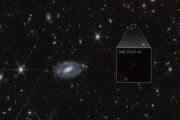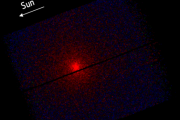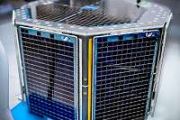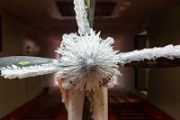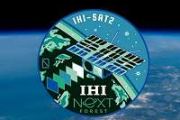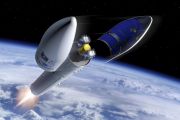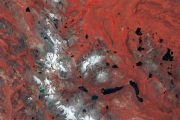
Copernical Team
Terran Orbital's GEOStare SV2 completes commercial imaging contract for Lockheed Martin
 Terran Orbital Corporation (NYSE: LLAP), a global leader in satellite-based solutions primarily serving the aerospace and defense industries, has announced its GEOStare SV2 spacecraft completed a commercial data services imagery contract for Lockheed Martin.
Throughout the duration of the contract, Terran Orbital's operations team successfully demonstrated the ability to rapidly re-task th
Terran Orbital Corporation (NYSE: LLAP), a global leader in satellite-based solutions primarily serving the aerospace and defense industries, has announced its GEOStare SV2 spacecraft completed a commercial data services imagery contract for Lockheed Martin.
Throughout the duration of the contract, Terran Orbital's operations team successfully demonstrated the ability to rapidly re-task th Historic UK rocket mission ends in failure
 An attempt to launch the first rocket into orbit from UK soil ended in failure on Tuesday, with scientists reporting an "anomaly" as it neared its goal.
A Virgin Orbit Boeing 747 carrying the 70-foot (21-metre) rocket took off from a spaceport in Cornwall, southwest England, at 2202 GMT.
The rocket then detached from the aircraft and ignited as planned at a height of 35,000 feet over the
An attempt to launch the first rocket into orbit from UK soil ended in failure on Tuesday, with scientists reporting an "anomaly" as it neared its goal.
A Virgin Orbit Boeing 747 carrying the 70-foot (21-metre) rocket took off from a spaceport in Cornwall, southwest England, at 2202 GMT.
The rocket then detached from the aircraft and ignited as planned at a height of 35,000 feet over the Are chemical rockets or solar sails better to return resources from asteroids?

If and when we ever get an asteroid mining industry off the ground, one of the most important decisions to be made in the structure of any asteroid mining mission would be how to get the resources back to where all of our other infrastructure is—somewhere around the Earth.
That decision typically will focus on one of two propulsion methodologies—chemical rockets, such as those we already use to get us into space in the first place, or solar sails, which, while slower and unable to get us into orbit, don't require any fuel. So which propulsion methodology is better for these future missions? A study by researchers at the University of Glasgow looked at those two scenarios and came out with a clear-cut answer—solar sails.
When answering these types of theoretical questions, it is essential to impose limits on the answers. For example, billions of asteroids exist in the solar system, so it's more realistic to only look at those known as near-Earth asteroids (NEAs).
Orion back at Kennedy Space Center so NASA can dissect Artemis I mission
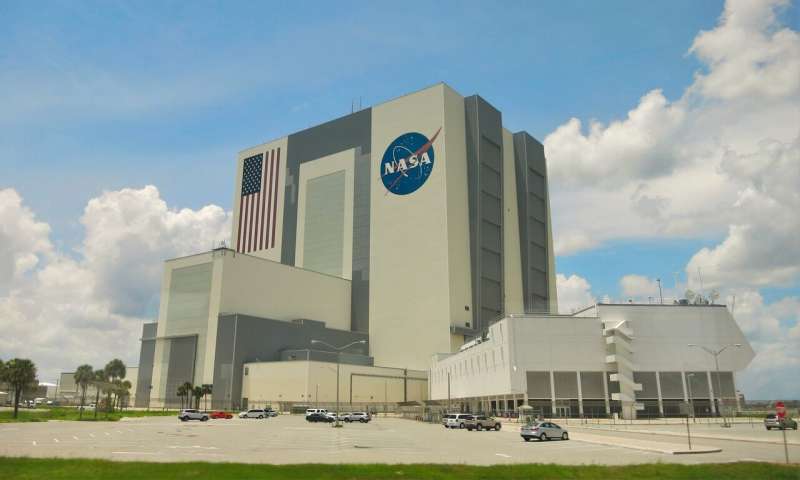
The Orion space capsule from Artemis I has come full circle, having launched from Kennedy Space Center, traveled 1.4 million miles in space and around the moon, splashed back down to Earth in the Pacific Ocean, and now journeyed 2,500 miles over land for its return to Florida.
After Orion was recovered at sea on Dec. 11, it made its way to Naval Base San Diego before heading by truck to arrive at KSC on Dec. 30. It now sits at NASA's Multi Payload Processing Facility, still sealed tight from its celestial journey.
The passengers have been waiting patiently to get out of the capsule. Since they're just mannequins, though, they can wait a little longer.
The most human-looking of the three, named Commander Moonikin Campos in deference to the late Arturo Campos who helped NASA bring the Apollo 13 crew safely back to Earth, was joined by two partial-body mannequins named Zohar and Helga. Their presence will help NASA determine just what sort of radiation levels and other flight stresses humans will face during the first crewed flight of Orion on Artemis II.
Full moon rising: The first lunar spectacle of 2023 is this weekend's wolf moon

If you lift your eyes to the sky Friday night, you can catch the first full moon of 2023—the wolf moon.
The full moon can best be seen at 6:08 p.m. EST on Friday and will appear full through Sunday morning, according to NASA.
"Look for the moon to rise from the northeastern horizon around sunset that evening," according to the Old Farmer's Almanac.
This is the first of 13 full moons in 2023, the Old Farmer's Almanac said.
The moon is also known as a micromoon, because the moon, which circles the Earth in an elliptical orbit, is farther from the Earth, said Space.com.
Why is it called the wolf moon?
The first full moon of the year is known as the wolf moon because historically it was believed during the winter wolves howled more at night because they were hungry, the Old Farmer's Almanac said.
The name has stuck even though there are doubts about the accuracy of the wolf moon moniker.
Why is it also called a micromoon?
For this full moon, the moon will be about 250,000 miles from Earth.
Historic UK rocket mission set for liftoff
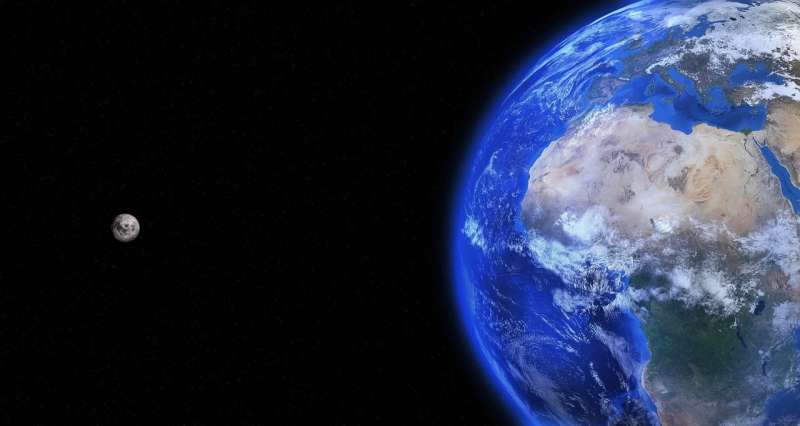
Final preparations were under way Monday for the first rocket launch from UK soil, catapulting it into the "exclusive" club of nine nations able to send crafts into Earth's orbit.
A repurposed Boeing 747 carrying the 70-foot (21-meter) rocket containing nine satellites will take off from a spaceport in Cornwall, southwest England, at 2216 GMT.
The rocket will detach from the aircraft at a height of 35,000 feet over the Atlantic Ocean to the south of Ireland before later discharging the satellites.
The aircraft will then return to Spaceport Cornwall, a consortium that includes Virgin Orbit and the UK Space Agency, at Cornwall Airport Newquay.
The launch will be the first from UK soil. UK-produced satellites have previously had to be sent into orbit via foreign spaceports.
"Joining that really exclusive club of launch nations is so important because it gives us our own access to space... that we've never had before here in the UK," Spaceport Cornwall chief Melissa Thorpe told BBC television on Monday.
Over 2,000 people are expected to watch the launch named "Start Me Up" after the Rolling Stones song.
Old NASA satellite falls harmlessly from sky off Alaska
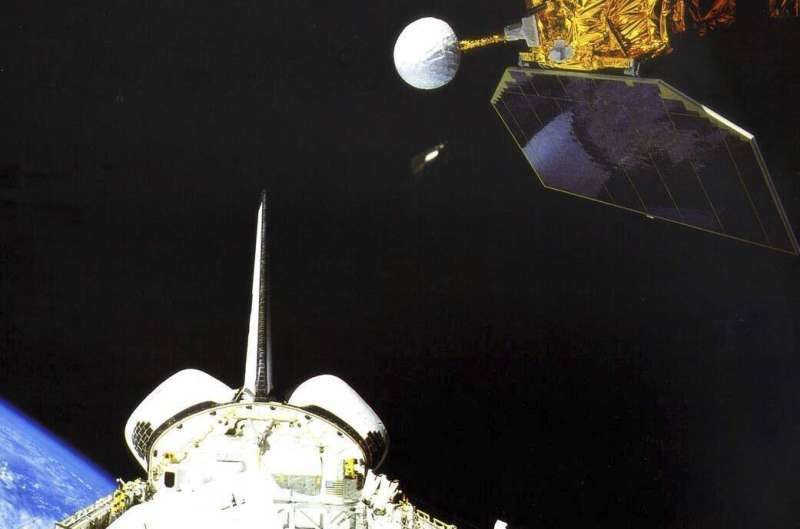
Sentinel-1 and AI uncover glacier crevasses
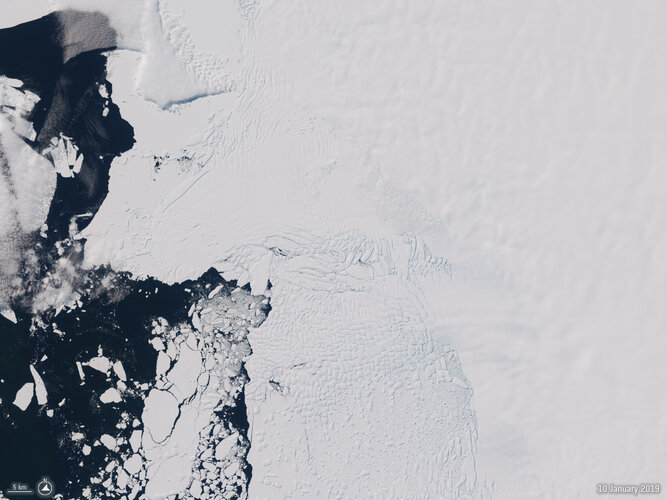
Scientists have developed a new Artificial Intelligence, or AI, technique using radar images from Europe’s Copernicus Sentinel-1 satellite mission, to reveal how the Thwaites Glacier Ice Tongue in West Antarctica is being damaged by squeezing and stretching as it flows from the middle of the continent to the coast. Being able to track fractures and crevasses in the ice beneath the overlying snow is key to better predicting the fate of floating ice tongues under climate change.
Join the hive: send your ideas for CubeSat swarms
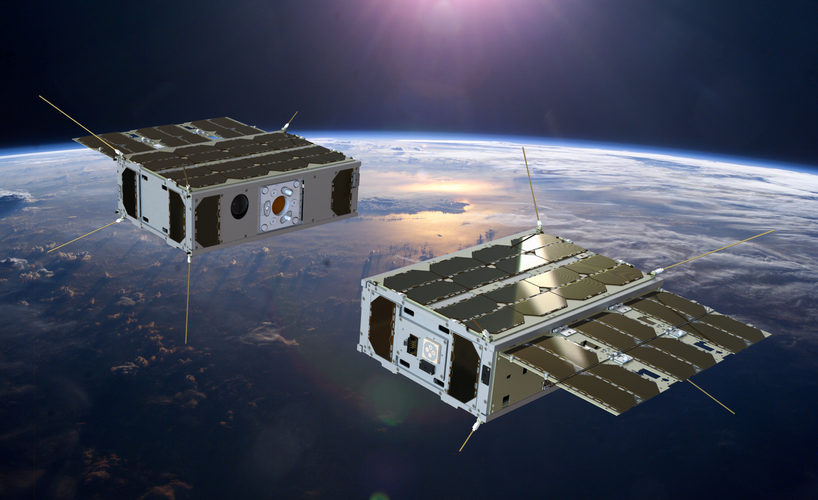
We all know the saying that there is strength in numbers. The next revolution in space technology could be the use of swarms of tiny spacecraft, called CubeSats, that work together to achieve things greater than what any lone spacecraft can. CubeSats, assemble!
OneWeb to launch 40 satellites with SpaceX
 OneWeb, the low Earth orbit (LEO) satellite communications company, will launch 40 satellites with SpaceX no earlier than Sunday, 8 January 2023, from Cape Canaveral Space Force Station in Florida. This launch will be OneWeb's sixteenth to date and its second with SpaceX following a successful launch in December, keeping the company on track to deliver global coverage in 2023.
This launch
OneWeb, the low Earth orbit (LEO) satellite communications company, will launch 40 satellites with SpaceX no earlier than Sunday, 8 January 2023, from Cape Canaveral Space Force Station in Florida. This launch will be OneWeb's sixteenth to date and its second with SpaceX following a successful launch in December, keeping the company on track to deliver global coverage in 2023.
This launch 





